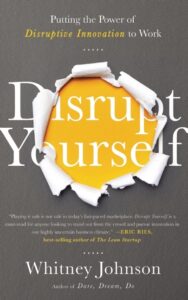I had a campus once that I hung onto year-after-year because, I reasoned, I liked the staff and the kids. Truthfully? It was a huge commute to a hugely problematic, huge caseload. I was even given the option to change each year, which I declined! A contract change led to a move to a new school where I…liked the staff and the kids. The new campus was way closer and a much more professionally run site. I didn’t realize how much I was suffering under loss aversion until the decision was made for me. Are we really capable of making decisions that go against what is best for us? A type of bias called loss aversion explains we are.
Loss aversion, a type of psychological bias often dictates our decision-making processes without regard for what is most beneficial to us. In the intricate choice between gain and loss, the human brain exhibits a remarkable bias towards avoiding losses, even at the expense of potential gains.
In this essay, let’s learn about how loss aversion can manifest in the lives of speech language pathologists to negatively impact job satisfaction, caseload size, and our adoption of new processes and technologies that we could really benefit from.

Understanding How Loss Aversion is Really Risk Aversion
At its core, loss aversion underscores the asymmetry between the pain of losing something and the pleasure of gaining an equivalent asset. This innate tendency to prioritize the avoidance of losses stems from a deep-seated fear of pain, whether physical, emotional, or financial. A simple illustration, such as the reluctance to discard an unused shirt despite its irrelevance, exemplifies how loss aversion permeates mundane decisions, often to our detriment. Here is a quick video that makes the point really well:
In speech pathology, loss aversion manifests itself in a variety of profound ways. Practitioners may find themselves:
- Traveling to clinics or campuses that don’t match their current family needs
- Wed to caseloads that might not be what they are currently interested in
- Maintaining a schedule that they put in place before they had kids or because they had kids, which doesn’t work anymore
- Having to partner with toxic colleagues or staff
- Avoiding new, easier technology programs
The fear of relinquishing what is known, even in the face of potential benefits, underscores the pervasive influence of loss aversion in clinical practice. Thankfully, when a practitioner wakes up to the idea that a change might be the best thing for them, there are some really strategies that we can employ to foster adaptability and growth.
Strategies to Reduce Loss Aversion

Facing loss aversion head-on has two immediate benefits: It provides newness and novelty, which usually goes hand-in-hand with excitement, and also unlocks new opportunities for professional development and fulfillment.
In her book Disrupt Yourself, Whitney Johnson offers a few effective strategies that we can tweak to apply to speech language pathology. Here’s two:
Disrupt Yourself
By challenging entrenched norms and embracing radical change, practitioners can break free from the grip of loss aversion and embark on a journey of self-reinvention. Whether it’s relinquishing unproductive caseloads, adopting new administrative systems, or embracing innovative therapeutic approaches, disruption offers a pathway to liberation from the status quo.
Disruption Question: How can I disrupt myself?
- End a therapy subscription, look for a new one
- Rearrange your caseload
- Increase your therapy session times and decrease your number of sessions
- Use an unfamiliar evaluation tool
- Switch from being a therapist to being an evaluator or vice versa
- Take a different caseload
- Accept a different campus
Collaborate
Co-labor-ation simply means you are spreading the work (labor) across several individuals. As SLPs, we are used to doing it all. Know that in other industries they divide work and dedicate specific staff to specific tasks. If a change terrifies you, find someone who has already mastered it and have them quickly show you the ropes.
Through peer support, mentorship, and shared learning experiences, practitioners can navigate the uncertainties of change with confidence and resilience. One district near us does this really successfully by using their speech meeting to have people present “solutions.” It’s a 5-7 minute presentation where someone basically says: “I used to struggle with X, now I do Y.” It can be a new process, a new app, a new idea from a conference or anything.
Collaboration Question: Who Can I Partner with For Help?
- Is there someone who is more technical and can teach you a program?
- Is there someone who is less experienced and can benefit from your knowledge?
- What YouTube video can you watch to see how to do something?
- What team can you help out to see if you want to join them?
- Whose reports can you peer review to see if you want to do more evaluations?
- Which clinics are on my commute home that might need an evaluation once a week?
Now it is easier than ever to meet with someone because of platforms like Zoom. Meet quickly with an expert in anything, watch their therapy or evals, or have them watch yours!
Loss aversion represents a formidable barrier to professional growth and can fool us into thinking that while we know we are not happy in a situation, there probably isn’t a better alternative. Any 20-year veteran will tell you that embracing change is one of the best things you can do for yourself, your family, and the profession. The longer you stay healthy, happy, and engaged, the more children or clients benefit from your services.
7 Types of Bias and How They Affect Speech Language Pathology
This is one of eight essays we wrote on bias, based on the work of Daniel Kahneman and the research we put together for the ASHA CEU course: How Ethics and Biases Shape Our Decisions: A Fun Look at Research on Heuristics. Start with the inspirational article on Daniel Kahneman and then work your way through seven ways our hidden biases can unknowingly influence our thinking.
- Navigating Fairness Bias in Our Role as SLPs
- Framing Effect: Shaping Perspectives with Words
- Understanding Availability Bias: Challenging Perceptions During Evaluations
- Deciphering the Conjunction Fallacy – Overlap or Isolation of Disorders?
- The Overconfidence Effect – Misperceptions About Amount of SLP Work and How Long it Takes
- Embracing Loss Aversion: Balancing Risk and Reward in Speech Pathology
- Freedom from the Anchoring Effect: When Numbers Work Against Us



